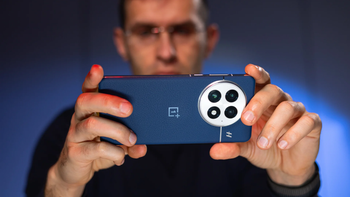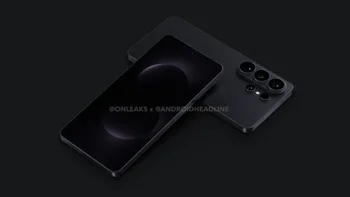Sony Xperia Z3 vs LG G3: first look
Design
Sony did a great job with the looks, but LG G3 wins the ergonomic challenge.
Different as they are, the Sony Xperia Z3 and LG G3 share a common design trait – efficiency! Sony's engineers strive for symmetry and precision, which is why the company's flagship phones keep to simple shapes and always feel so remarkably balanced in the hand. LG's concept for efficiency led to remarkably thin bezels and a terrifically sculpted back panel, all to make the 5.5-inch behemoth fit as best as it possibly could inside your hand. Build quality is another matter, however. The Xperia Z3 is all about aluminum and tempered glass, while the LG G3 is an interesting exercise in giving plastic an expensive look. Both phones are quite sturdy, but the Xperia Z3 has the metal edge.
Display
Both phones have displays that are extremely pleasant to look at, but the LG G3's has the wow-factor.
The Xperia Z3 boasts with a clear and bright 5.2-inch 1080p LCD screen with a pixel density of 442ppi and Sony's TRILUMINOS Display, Live Color LED, and X-Reality technologies caring for the best possible view. On the other hand, the LG G3's 5.5-inch QHD display with a pixel density of 538 ppi is a flawed masterpiece. While the increase in resolution is noticeable, the G3's display is dim and over-sharpened when put next to the Z3's. Still, both phones are pleasant to look at. If you are looking to future-proof yourself and enjoy catching microscopic details, consider the LG G3 – otherwise the Xperia Z3 is a winner.
Interface
Sony is decidedly multimedia-centric, while the LG G3 aims to please the everyman.
The Sony Xperia UI and the LG Optimus UI have distinct visual languages and software features. Visually, both are modern and have the relative advantage of functioning pretty much like "stock" Android, while still having an identity. Sony and LG's user interfaces are clean, sharp, and devoid of confusing menus and visual clutter. Sony is decidedly multimedia-centric with its music and video apps and widgets, while the LG G3 aims to please the everyman by keeping its interface simple, colorful, light on factory apps, and embracing personalization.
Processor and memory
Both the Xperia Z3 and LG G3 will comfortably hold their own for another year or two.
Sony's flagship presents a conservative approach. Instead of overloading on cutting-edge specs, the vendor decided on the proven combination of a 2.5GHz Snapdragon 801 quad-core CPU and 3GB of RAM. This is exactly what a high-end smartphone with a 1080p display needs to operate smoothly and have great battery life! But what about a QHD phone? Well, LG pulled off quite a bit of magic to make the LG G3 keep pace on the exact same hardware platform, but a high working temperature, diminished battery life, and occasionally sluggish performance show the phone is struggling for breath.
Camera
Both smartphones are terrific cameraphones!
Sony went all-in on the Xperia Z3's camera. It sports a mighty 20.7MP sensor with 8x digital zoom, and 3x "Clear Image" zoom, while the front cam is a handy 2.2MP unit with 1080p video chat and recording support. The LG G3 also sources camera technology from Sony, but it's quite modest in comparison – it has a 13MP rear camera and a 2.1MP mugshot maker. The secret sauce to the G3's brilliant photography is the Laser Focus. Who knew a vacuum cleaner laser could make for such a fast and efficient focus system? Both phones offer 1080p and 4K video recording, along with their Snapdragon chipsets' built-in photo re-focusing and editing trickery.
Conclusion

Follow us on Google News














Things that are NOT allowed:
To help keep our community safe and free from spam, we apply temporary limits to newly created accounts: